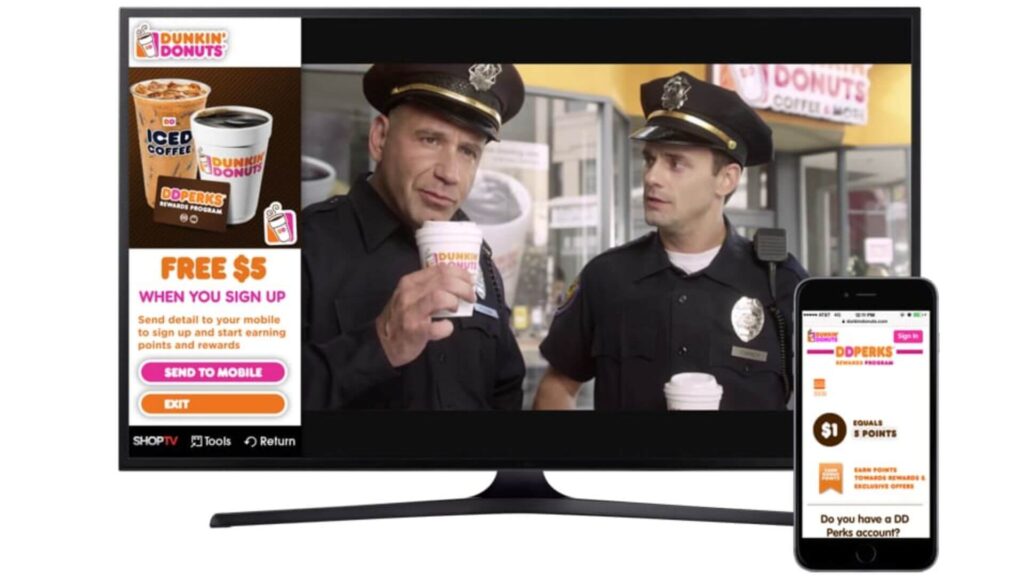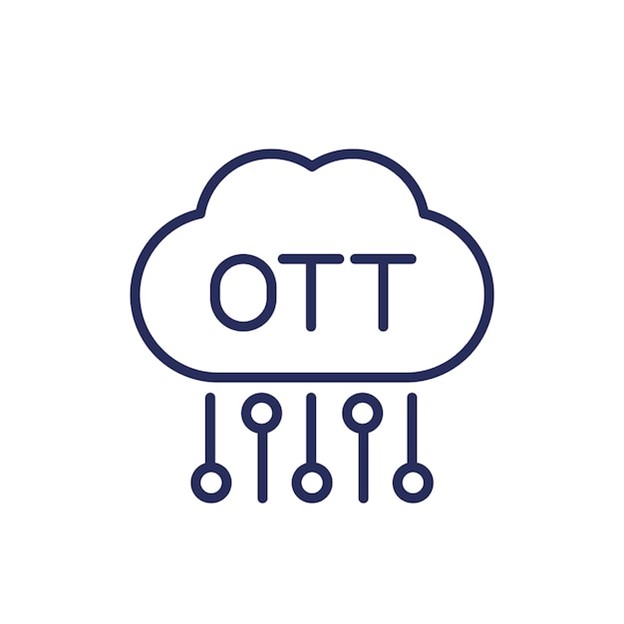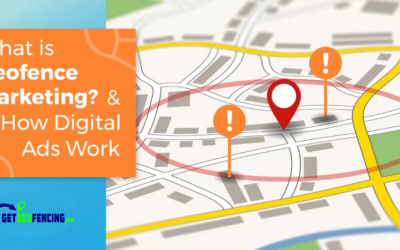Connected TV Advertising
In the ever-evolving landscape of digital advertising, businesses are continually exploring new ways to reach their target audience effectively. One such method gaining momentum is connected TV advertising. With the increasing popularity of streaming platforms and smart devices, connected TV advertising offers a unique opportunity to engage consumers in their living rooms.
Connected TV advertising allows brands to deliver personalized, high-quality video content to viewers across various devices, including smart TVs, gaming consoles, and streaming devices. This innovative form of advertising ensures that your message reaches audiences consuming content through on-demand services and internet-connected platforms.
By incorporating targeted data and programmatic technology, connected TV advertising enables brands to deliver relevant and engaging content, capturing viewers’ attention in a clutter-free environment. Additionally, this form of advertising offers a seamless integration of traditional TV advertising with digital capabilities, allowing for precise targeting, real-time analytics, and greater campaign flexibility.

What is Connected TV Advertising?
Connected TV advertising refers to the practice of delivering video advertisements to viewers through internet-connected devices, such as smart TVs, streaming devices, and gaming consoles. Unlike traditional TV advertising, which is broadcast over the airwaves, connected TV advertising utilizes internet connections to deliver content directly to viewers’ screens.
Connected TV advertising offers a range of targeting options, allowing brands to reach specific audiences based on demographics, interests, and viewing habits. This level of targeting ensures that advertisements are delivered to the most relevant viewers, maximizing the impact and effectiveness of the campaign.

The Rise of Connected TV Advertising
Over the past few years, connected TV advertising has experienced significant growth and has become an integral part of many brands’ marketing strategies. The rise of streaming services, such as Netflix, Hulu, and Amazon Prime Video, has contributed to the increasing popularity of connected TV advertising.
With the shift in consumer behavior towards streaming content, advertisers have recognized the need to adapt their strategies to reach audiences where they spend the most time. Connected TV advertising provides a unique opportunity to engage viewers in a personalized and non-intrusive manner, making it an attractive option for brands looking to increase their reach and drive conversions.

Benefits of Connected TV Advertising
Connected TV advertising offers several benefits that make it a compelling option for brands looking to enhance their digital marketing efforts. Here are some key advantages:
1. Enhanced Targeting and Relevance
Connected TV advertising allows brands to target specific audiences based on demographic data, interests, and viewing habits. This level of targeting ensures that advertisements are delivered to the most relevant viewers, increasing the chances of capturing their attention and driving engagement.
Additionally, connected TV advertising enables brands to deliver personalized messages to viewers, creating a more personalized and impactful experience. By tailoring content to the individual viewer, brands can establish a deeper connection with their audience, ultimately driving brand loyalty and increasing conversions.
2. Reach a Growing Audience
With the increasing popularity of streaming services and internet-connected devices, connected TV advertising provides brands with access to a rapidly growing audience. As more consumers cut the cord and turn to streaming platforms for their entertainment needs, brands have the opportunity to reach viewers who may no longer be exposed to traditional TV advertising.
By leveraging connected TV advertising, brands can tap into this expanding market, ensuring that their message reaches consumers where they spend the most time. This increased reach allows brands to maximize their advertising budgets and generate greater brand awareness.
3. Seamless Integration with Traditional TV Advertising
Connected TV advertising offers a seamless integration of traditional TV advertising with digital capabilities. Brands can leverage the benefits of traditional TV advertising, such as the power of sight, sound, and motion, while also taking advantage of the precision targeting and real-time analytics offered by digital advertising.
This integration allows brands to create cohesive and effective campaigns that leverage the strengths of both mediums. By combining the broad reach of traditional TV advertising with the targeting precision of digital advertising, brands can optimize their campaigns for maximum impact and results.
4. Greater Campaign Flexibility
Connected TV advertising provides brands with greater flexibility in their advertising campaigns. Unlike traditional TV advertising, which requires long lead times and fixed time slots, connected TV advertising offers more control and agility.
Brands can quickly launch and modify their campaigns, ensuring that their messaging remains relevant and up-to-date. This flexibility allows brands to respond to market trends, competitor activities, and consumer feedback in real-time, maximizing the effectiveness of their advertising efforts.

Statistics on Connected TV Advertising
The growth and impact of connected TV advertising can be seen in the following statistics:
- According to eMarketer, connected TV ad spending is projected to reach $17.4 billion in the US by 2024, representing a significant increase from $8.88 billion in 2020.
- A report by Conviva found that connected TV viewing hours increased by 63% in 2020, indicating the growing popularity and adoption of streaming platforms.
- The Interactive Advertising Bureau (IAB) reported that 56% of US adults own a connected TV device, highlighting the widespread availability and usage of these devices.
These statistics demonstrate the immense potential of connected TV advertising and the opportunities it presents for brands to reach and engage their target audience.

Strategies for Successful Connected TV Advertising Campaigns
To ensure the success of your connected TV advertising campaigns, consider implementing the following strategies:
1. Define Your Audience
Before launching a connected TV advertising campaign, it’s crucial to clearly define your target audience. Understand their demographics, interests, and viewing habits, as this will inform your targeting and messaging strategies.
By identifying your audience, you can tailor your content to resonate with their preferences and needs, increasing the chances of capturing their attention and driving engagement.
2. Create Compelling Video Content
Video content is at the core of connected TV advertising. To stand out in a crowded digital landscape, create compelling and high-quality videos that resonate with your target audience.
Consider leveraging storytelling techniques, incorporating emotional appeals, and showcasing the unique value proposition of your brand. By creating captivating videos, you can capture viewers’ attention and leave a lasting impression.
3. Leverage Targeting Options
Connected TV advertising offers a range of targeting options to ensure your advertisements reach the most relevant viewers. Consider utilizing demographic targeting, geographical targeting, and behavioral targeting to maximize the impact of your campaigns.
By delivering personalized and relevant content, you can effectively engage your target audience and drive conversions. Continuously monitor and optimize your targeting strategies to ensure you are reaching the right viewers at the right time.
4. Optimize for Different Devices
Connected TV advertising encompasses a wide range of devices, including smart TVs, gaming consoles, and streaming devices. To maximize the reach of your campaigns, optimize your content for various devices, ensuring a seamless viewing experience for your audience.
Consider adapting your videos to different screen sizes, resolutions, and streaming platforms. By optimizing for different devices, you can reach a larger audience and increase the effectiveness of your advertising efforts.

Targeting Options in Connected TV Advertising
Connected TV advertising offers a variety of targeting options to help brands reach their desired audience effectively. Here are some key targeting options available:
1. Demographic Targeting
Demographic targeting allows brands to deliver their advertisements to specific audience segments based on characteristics such as age, gender, income, and household composition. By targeting specific demographics, brands can ensure that their messaging resonates with the intended audience and increases the chances of engagement.
2. Geographical Targeting
Geographical targeting enables brands to deliver their advertisements to viewers in specific regions or locations. This targeting option is particularly useful for locally-focused campaigns or brands looking to reach audiences in specific markets.
By targeting viewers in specific geographical areas, brands can tailor their messaging to local interests and preferences, increasing the relevance and impact of their advertising efforts.
3. Behavioral Targeting
Behavioral targeting allows brands to deliver advertisements based on viewers’ online behavior, interests, and past viewing habits. By analyzing data on viewers’ browsing history, search queries, and content consumption, brands can deliver personalized and relevant content to their target audience.
Behavioral targeting ensures that advertisements are delivered to viewers who are more likely to be interested in the brand’s products or services, increasing the chances of engagement and conversions.
4. Contextual Targeting
Contextual targeting involves delivering advertisements based on the content viewers are consuming. By analyzing the context of the content being viewed, brands can deliver relevant advertisements that align with the viewers’ interests and preferences.
Contextual targeting ensures that advertisements are delivered in a contextually relevant manner, increasing the chances of capturing viewers’ attention and driving engagement.

Measuring the Effectiveness of Connected TV Advertising
To measure the effectiveness of your connected TV advertising campaigns, consider implementing the following metrics and analytics:
1. Viewability
Viewability measures the percentage of your advertisements that are actually seen by viewers. By tracking viewability, brands can determine the visibility and impact of their campaigns, enabling them to optimize their strategies for maximum reach and engagement.
2. Completion Rate
Completion rate measures the percentage of viewers who watch your entire advertisement. A high completion rate indicates that viewers are engaged with your content and are more likely to take the desired action.
By monitoring completion rates, brands can assess the effectiveness of their advertisements and make necessary adjustments to improve performance.
3. Click-Through Rate (CTR)
Click-through rate measures the percentage of viewers who click on your advertisement to visit your website or landing page. A high CTR indicates that viewers are interested in learning more about your brand or offerings.
By tracking CTR, brands can assess the effectiveness of their messaging and creative elements, allowing them to optimize their campaigns for greater engagement and conversions.
4. Conversions
Conversions measure the number of viewers who take the desired action after viewing your advertisement. This could include making a purchase, signing up for a newsletter, or requesting more information.
By tracking conversions, brands can determine the direct impact of their connected TV advertising campaigns on their business goals. This data can inform future strategies and optimizations to drive even better results.

Best Practices for Creating Connected TV Advertising Content
To create compelling and effective connected TV advertising content, consider implementing the following best practices:
1. Keep Your Message Clear and Concise
Connected TV advertisements typically have limited time to capture viewers’ attention. Keep your message clear, concise, and focused on the key value proposition of your brand or product. Avoid cluttering your content with excessive information or distracting visuals.
By delivering a clear and concise message, you can quickly engage viewers and communicate the unique benefits of your brand.
2. Incorporate Branding Elements
Ensure that your connected TV advertisements incorporate consistent branding elements, such as logos, colors, and taglines. This helps viewers recognize and associate the advertisement with your brand, increasing brand recall and awareness.
Consistent branding also helps establish a sense of trust and familiarity with your audience, making them more likely to engage with your content and take the desired action.
3. Optimize for Sound-Off Viewing
Many viewers watch connected TV content with the sound off or at low volume. To ensure your message still resonates with these viewers, consider incorporating visually engaging elements, such as subtitles, captions, and compelling visuals.
By optimizing your content for sound-off viewing, you can effectively engage a wider audience and maximize the impact of your connected TV advertising campaigns.
4. Test and Iterate
Connected TV advertising provides ample opportunities for testing and iteration. Continuously monitor the performance of your campaigns, experiment with different creative elements and messaging strategies, and optimize based on the data and insights gathered.
By testing and iterating, brands can refine their advertising strategies and maximize the effectiveness of their connected TV campaigns.

Case Studies of Successful Connected TV Advertising Campaigns
To illustrate the effectiveness of connected TV advertising, let’s explore two case studies of successful campaigns:
Case Study 1: Brand X
Brand X, a leading e-commerce retailer, leveraged connected TV advertising to drive brand awareness and increase sales during the holiday season. By targeting viewers who had previously shown interest in their products, Brand X delivered personalized video advertisements showcasing their latest holiday deals and promotions.
The campaign resulted in a 30% increase in website traffic, a 20% increase in sales, and a significant boost in brand awareness. The precise targeting and engaging video content played a crucial role in the success of the campaign, allowing Brand X to connect with their audience and drive measurable results.
Case Study 2: Company Y
Company Y, a digital streaming platform, utilized connected TV advertising to promote their new original series. By targeting viewers who had previously watched similar content and leveraging contextual targeting, Company Y delivered compelling video advertisements showcasing the unique storyline and characters of the series.
The campaign resulted in a 50% increase in subscriptions to the streaming platform and a significant buzz on social media. The combination of targeted messaging, captivating visuals, and strategic timing contributed to the success of the campaign, allowing Company Y to generate excitement and attract a larger audience to their platform.
Conclusion
Connected TV advertising presents a unique opportunity for brands to engage their target audience in a personalized and impactful manner. With its ability to deliver relevant and engaging content, seamless integration with traditional TV advertising, and precise targeting options, connected TV advertising has become an essential tool for brands aiming to drive awareness, increase brand loyalty, and boost conversions.
To leverage the power of connected TV advertising, define your audience, create compelling video content, leverage targeting options, and measure the effectiveness of your campaigns. By following best practices and learning from successful case studies, brands can maximize the impact of their connected TV advertising efforts and connect with their audience like never before. Embrace the power of connected TV advertising today and unlock new possibilities for your brand.



